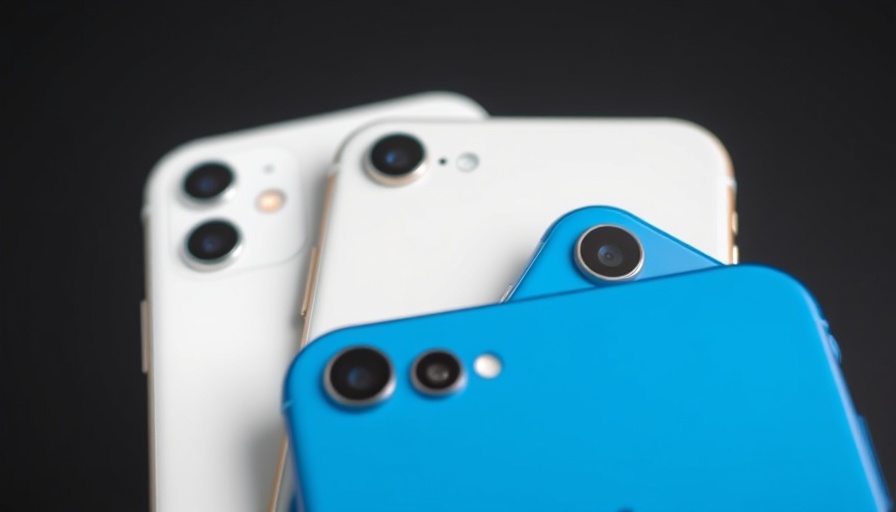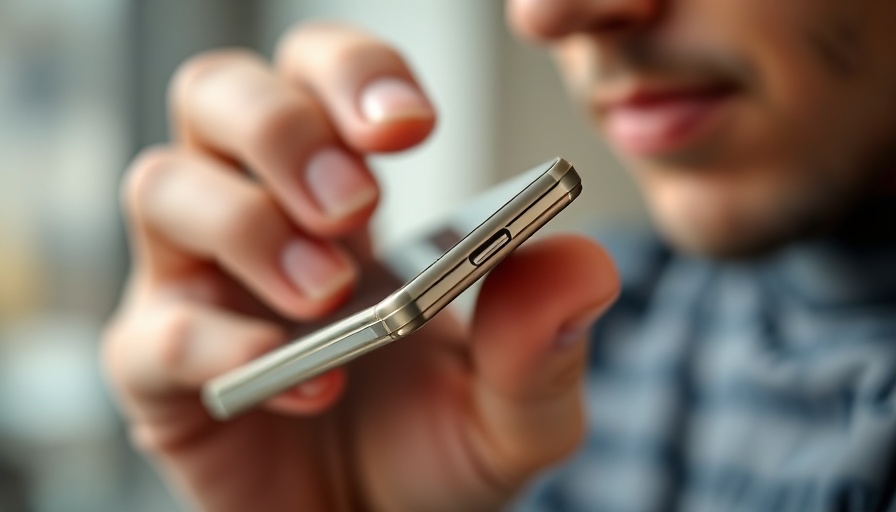
Are The New iPhones Worth the Hype?
In the latest unveiling at Apple's September 2025 event, the iPhone 17, 17 Pro, and the stunningly thin iPhone Air have certainly generated buzz, but do they live up to expectations? As tech enthusiasts anticipate the release of these devices, the initial impressions reveal a mix of enhancements, modest improvements, and a few potential red flags.
In 'iPhone 17/Pro/Air Impressions: Spot the Red Flags!', the discussion dives into the latest offerings from Apple, exploring key insights that sparked deeper analysis on our end.
A Fresh Look at the iPhone 17
The iPhone 17 arrives with some notable upgrades. It features a new A19 chip, promising a performance boost of approximately 20%, brighter display capabilities reaching 3000 nits, and the introduction of ProMotion technology. This added smoothness across all models transforms the typical user experience, marking a significant upgrade that's likely to appeal to many users. The selfie camera also gets a major upgrade, now with a 24-megapixel sensor capable of capturing both portrait and landscape shots with ease, a move that’s fueled excitement among selfie aficionados.
Changes Enhancing the iPhone 17 Pro Experience
The iPhone 17 Pro stands out with a fresh physical design and improved functionality. Though it makes a switch back to aluminum, which raises some eyebrows after the titanium body of its predecessor, thermal advantages won’t go unnoticed. With an impressive design shift, the Pro models come equipped with a “plateau” camera bar that increases battery capacity and enhances usability without compromising performance. Apple promises 40% better sustained performance, making it easier for users to game or create content without overheating. However, the absence of a black variant for the Pro model may disappoint some die-hard fans.
Is the iPhone Air a Step Too Far?
The real conversation piece could very well be the new iPhone Air. At just 5.6mm in thickness, this model sacrifices durability for form factor, raising serious concerns about its battery life and overall robustness. It is set to retail at $999, a curious price point given its limitations compared to the iPhone 17 and 17 Pro. Despite receiving the same A19 Pro chip, the absence of key thermal management features signals a potential risk for overheating and degraded performance under heavy use. This begs the question: is Apple's latest approach a stroke of genius or a gamble that may flop?
Exciting Features & Red Flags
While the advancements in selfie technology and battery performance are appealing, enthusiasts should remain cautious. The iPhone Air, in particular, offers an attractive design that may visually captivate buyers, but the decision to exclude certain standards—like millimeter-wave 5G compatibility—in its pursuit of thinness is debatable. To many tech-savvy consumers, the allure of usability and endurance far outweighs aesthetic appeal. As with many things Apple does, only time will confirm whether this gamble will pay off.
The Bigger Picture: Tech Trends
These innovations point towards a significant trend in the smartphone market: the drive for sleeker devices at the expense of functionality and performance. Despite exciting advancements, the skepticism surrounding the iPhone Air serves as a reminder that the future of smartphones includes a balance between design and efficiency. Enthusiasts may view this as Apple paving the way for ultra-thin technology or, conversely, as an attempt to appeal to consumers with compelling aesthetics over practical function.
Conclusion: Stay Tuned for More Insights
As we wait for hands-on reviews and tests of these devices, the excitement of a shiny new Apple product juxtaposes nicely with the nagging thoughts of practicality. Will the iPhone 17 series deliver the performance that users crave or fall prey to the temptations of form over function? Stay subscribed to catch detailed reviews and insights as we further explore these new devices and dig deeper into their real-world capabilities.
 Add Row
Add Row  Add
Add 




Write A Comment